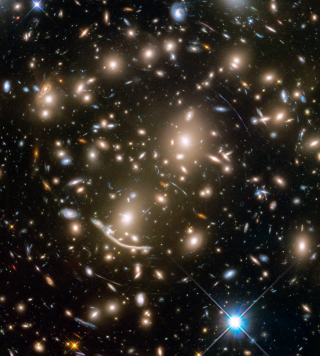Bibcode
Habibi, Asiyeh; Roshan, Mahmood; Hosseinirad, Mohammad; Khosroshahi, Habib; Aguerri, J. A. L.; Cuomo, Virginia; Abbassi, Shahram
Referencia bibliográfica
Astronomy and Astrophysics
Fecha de publicación:
11
2024
Revista
Número de citas
2
Número de citas referidas
2
Descripción
In this paper, the redshift evolution of the galactic bar properties, like the bar length, pattern speed, and bar fraction, has been investigated for simulated galaxies at stellar masses of M* > 1010 M$\odot$ in the cosmological magnetohydrodynamical simulation TNG50. We focus on the redshift evolution of the bar pattern speeds and the fast bar tension. We show that the median value of the pattern speed of the bars increases as the redshift grows. On the other hand, although the median value of the bar length increases with time, the ratio between the corotation radius and the bar radius - namely, the $R$ = $R$ CR/Rbar parameter - increases as well. In other words, the corotation radius increases with a higher rate than the bar length. This directly means that galactic bars slow down with time, or equivalently as the redshift declines. We discuss the possible mechanisms that reduce the pattern speeds in TNG50. We demonstrate that while mergers can have a significant impact on a galaxy's pattern speed, they do not play a crucial role in the overall evolution of mean pattern speed within the redshift range $\textrtz$ ≤ 1.0. Furthermore, we show that the $R$ parameter does not correlate with the gas fraction. Consequently, the existence of gas in TNG50 does not alleviate the fast bar tension. We show that the mean value of the pattern speed, computed for all the galaxies irrespective of their mass, at $\textrtz$ = 1.0 is $\Omega$p = 70.98 ± 2.34 km s‑1 kpc‑1 and reduces to $\Omega$p = 33.65 ± 1.07 km s‑1 kpc‑1 at $\textrtz$ = 0.0. This is a direct prediction by TNG50 that bars at $\textrtz$ = 1.0 rotate faster by a factor of ~2 compared to bars at $\textrtz$ = 0.0.
Proyectos relacionados

Evolución de Galaxias en Cúmulos
Las estructuras en el Universo, a todas las escalas de masa, se han formado de una forma jerárquica y principalmente producidas por fusiones de galaxias. Sin embargo, esta formación jerárquica de las galaxias está modulada por el entorno en el cual se crean y evolucionan. Mientras que las galaxias de campo presentan una evolución pasiva, los
Jairo
Méndez Abreu